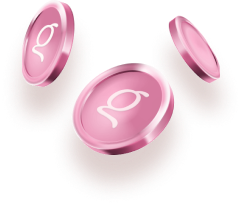CONSTRUCTION OF THE ARTIFICIAL NAIL
When you need to strengthen or lengthen your natural nail, it is extremely important that you know how the shape of the nail is built correctly. The shape helps to create strength and ensure that the nail holds optimally. An incorrectly constructed nail will fall off or lift within a very short time, as the nail will be stressed in an inappropriate way during everyday use. To illustrate this, you can imagine the nail as a bridge. If the bridge is to be able to withstand all the weight that must travel over it, then it must have some points of strength. Exactly the same should be the nail. Otherwise, it will break easily and quickly, or the harder product will come off the softer nail.

Upper Arch and Apex - the strength point of the nail
All nails have a point that is more exposed than other points. This point is called the stress point. The stress point manifests itself as a small, white area on the nail plate when light pressure is applied to the tip of the nail. If you press hard enough on the tip of the nail, the stress point will eventually be overloaded and the nail will break on both sides - these two breaking points are called weak points. 
To compensate for the stress point and ensure that the nail does not break at its weak points, you must make sure to build a nail shape that has a strength point. The point of strength is built by shaping a curved upper arch, which means that the nail is built in an even arc from cuticle to nail tip. Approximately in the middle of the upper arch, a point of strength must be placed, which is the uppermost point of the upper arch. This uppermost point of strength is called the apex. Apex is the highest point on the upper arch, and it is located exactly above the stress point of the nail. 
When working with Builder Gel (which is liquid and self-leveling), you can create an apex using gravity. This is done by turning the finger upside down after the Builder Gel is applied. If working with Polygel, which has a firmer consistency, it will be necessary to shape the apex by hand or file it forward after hardening. A more in-depth method for building the apex can be found in the Theory book for perfect nails , as well as in our learning universe . 
EXAMPLE
Here is an example of what a properly constructed nail looks like when it has some strong points that can withstand everyday stresses. To the left of the correctly constructed nail is an incorrectly constructed nail without apex and strength points.

Lower arch
The lower arch is the two sides of the nail, which run in extension with the lower edges of the natural nail. It is important that both lower arches are built and filed correctly so that they can form the underside of the strength point. The lower arch must always align with the lower edge of the natural nail. It must therefore neither curve downwards, point upwards nor make a bend. As a rule of thumb, it must be possible to place a nail file horizontally along both lower arches, after which the file must align with the lower edges of the natural nail - all the way from the cuticle to the free edge of the nail.
Smooth product placement
In addition to ensuring a curved upper arch, correct placement of the apex and some straight lower arches, it is also important to place the product evenly across the entire nail.
If you look directly at the tip of the nail, it is important that the product appears to be placed with an even distribution over the entire nail. It will create an imbalance in the strength point if the product leans to one of the sides or has an uneven thickness. As a rule of thumb, there should be at least 1-1.2 mm of product over the entire nail to ensure a balanced nail construction.

It is important to be particularly aware that enough product must be applied to the two weak points (the aforementioned breaking points on the sides of the nail), since they are extra exposed to breaking and lifting when the nail is overloaded. Many strive for the natural and slim look, but it is important to remember that you cannot simply file the nails thinner and narrower than the nail art allows. There MUST be between 1-1.2 mm of product on both sides and all the way across the nail in the stress zone if the nail is to last optimally for 3-4 weeks without breaking or lifting. 
It is also important that the nail is built in a straight shape that is neither too wide, too narrow nor crooked. This is ensured both by filing the nail before product is applied, but it is also important to pay attention when applying a tip or building on a template. If a nail is out of balance when viewed from above, it will put the nail's strength point out of balance and thus increase the risk that the nail will not hold optimally.

Nail shapes and growth direction
Nail shapes
All nails have different shapes and growth directions from nature. When building a correctly balanced nail, there are some nail shapes and growth directions that can cause special challenges. It is therefore important to know your nail shape and growth direction and take extra care when placing your product.
A distinction is made between two different nail shapes: the normal nail shape and trapezoid nail shape.
The normal nail shape appears in different shades. The hallmark of the nail shape, however, is that it appears harmonious and is equally wide from top to bottom, and that the lateral nail folds (the sides of the nail) run side by side. Build-up and extension on the normal nail shape rarely cause problems, and there are no special considerations that need to be taken.

The trapezoid shape is defined by the sides of the nail growing out like a V, and thus has a narrow nail plate at the back and a wide nail plate at the front. Building an artificial nail on trapezoidal nails often causes problems during extension, since the shape of the trapezoidal nail makes it difficult to build a point of strength in balance.
If you extend with templates, the nails are often too wide for the standard cutout of the template. In that case, it is necessary to cut the rounding on the template more squarely and possibly into a point, so that this can be placed under the free edge and still align all the way around the natural nail's C-curve (arc). Likewise, it can be challenging to get both classic tips and press on tips to fit the trapezoidal nail. You can try to adapt the tips by filing them so that they follow the natural shapes and anatomy of the natural nail. However, it requires care and patience so that you do not risk causing damage by disturbing the elements and functions of the nail anatomy.
People with a trapezoid nail shape often want narrow and slender nails with a pointed or oval rounding. However, it is important to know that the nails cannot be made narrower than their natural width. If you try to squeeze the nail narrower, you risk disturbing the natural shape of the nail and can thereby cause long-term damage.
Growth direction
When the growth direction is to be identified, a distinction is made between three different types: typically flat growth direction, downward curved growth direction and upward curved growth direction.

Typical flat growth direction
The typical flat growth direction is the most normal. It is quite flat, but it has a very nice little curve from the cuticle to the free edge. With this growth direction, there are usually no special challenges with either strengthening or lengthening.
Downward growth direction (eagle beak)
The downward curved nail shape has an elevation of the nail around the middle, which gives a very strong arch. This also means that the nail will hook downwards as it grows out. With this type of growth direction, it is extra important to pay attention to creating balance in the nail's strength point by filing the side walls straight. The nail must therefore not hook downwards, because this creates an imbalance and will create an exposed breaking point in the middle of the nail. The side walls are thus the biggest focal point for creating a balanced nail with a downward curved growth direction. 
Upward growth direction (ski jump)
The upward-curved growth direction grows straight or downward-curved out of the matrix and ends in an upward-pointing arc at the end of the nail at the free edge. Often, a trapezoidal nail shape is also seen in those who have an upward growth direction. With this type of growth direction, it can be particularly challenging to make both reinforcement and extension with a correctly balanced nail. However, it can easily be done with the right technique and a bit of patience.
Before placing either tipper or template, it is important that the nail is cut very short. Preferably so short that there are only approx. 2 mm free edge left. The shorter the nail, the less it will stick up in the air. The trick is to ensure that a good apex (the arch in the middle of the nail) is created, which forms the basis for the new shape of the nail with ski jump nails. It is therefore about turning the downward-curving "hole" in the middle of the nail so that it instead becomes a fine upward-curving apex instead.
EXAMPLE
When you have to make a correct build-up on a flat, downward-curved and upward-curved growth direction respectively, the build-up must be adapted as seen below. In this way, the direction of growth and the build-up complement each other, so that in the end the nail has a correct shape with correct points of strength. 
























